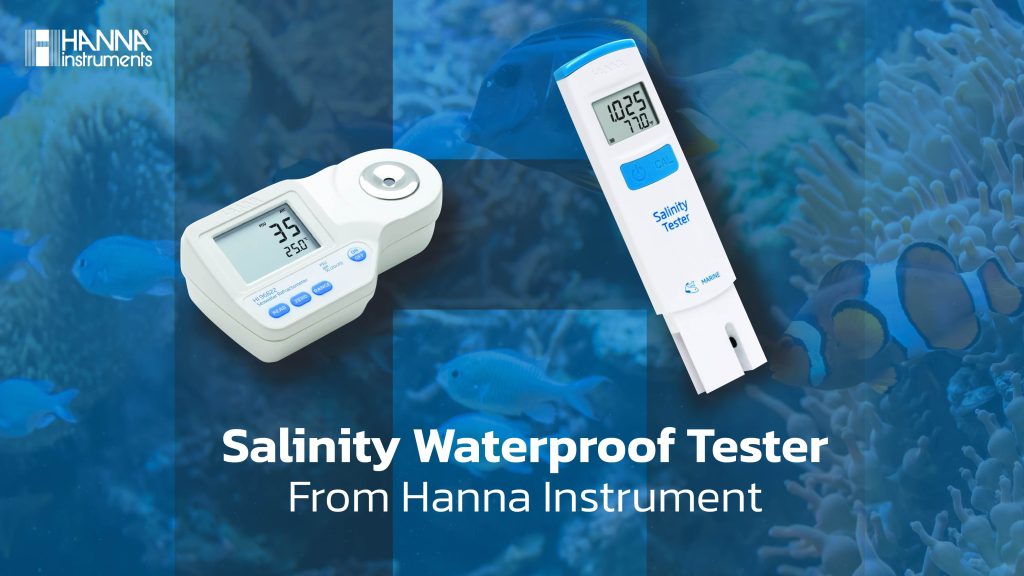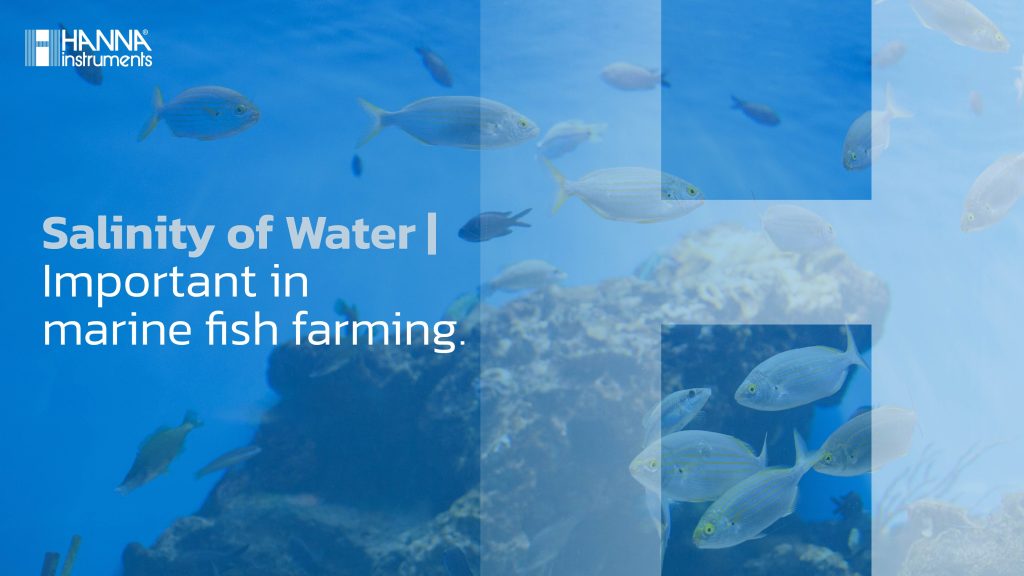No products in the cart.
ชุดวัดความเค็มของน้ำ
Salinity of Water | Important in marine fish farming.
There are numerous factors in raising marine fish that must be controlled in order for pets to evolve properly. As a result, it is not difficult if you are attentive, calm, and passionate. Because raising marine fish differs greatly from raising freshwater fish, the environment must be controlled to be suitable for the fish’s actual environment. The difficult and conditions for care are adjusted based on the type or species of coral.
The importance of water for life
– It is an oxygen source that fish must breathe. The oxygen required by fish must be dissolved in the water. Good water conditions with fewer impurities will result in good oxygen solubility. as a result, healthy fish
– influences growth The fish will grow well if the water is of good quality. Even if the fish are well fed, water conditions caused by excessive excretion of fish waste can result in stunted fish and slow growth.
– Influences fish food intake If the water conditions are poor, there will be less food. swimming slowly Weak and susceptible to disease
– Affects the color of the fish Improper water quality will result in a discolored fish.The appropriate water quality standards for marine fish are salinity of sea water.
Minerals, salts, and other compounds are naturally found in seawater or salt water. many more the salinity of the seawater used to raise fish should be 35 ppt (mg/L), but measuring salinity is difficult. As a result, the salinity of sea water is also known as its relative density. Specific gravity refers to the density of water (SG). Water density is proportional to salinity; that is, the higher the salinity, the higher the density of the water. in the 1.20 – 1.25 range.
Checking the salinity of sea water
The unit of measurement for sea water salinity is ppt (g/L). The salinity of “sea water” is usually around 35 ppt. This translates to 35 grams of dissolved salts in 1 liter of seawater. Synthetic seawater based on various formulas Will receive water with a salinity of 30-35 ppt. To ensure the safety of marine fish culture, the appropriate salinity level for each marine fish species must first be determined. As a result, always check the salinity of the water before releasing cultured fish into synthetic seawater. and should always take salinity measurements The following are some of the most commonly used tools and methods for determining water salinity:
1.Use a water specific gravity meter (Hydrometer)
looks like a glass tube Hydrometers are currently being manufactured for use in marine fish farming. A bar on the device represents the specific gravity of sea water. It has an approximate value of 1.0002, so when the device is dropped into seawater, a bar indicating the level of specific gravity of 1.0002 is clearly displayed. A value above the water surface indicates that the salinity is greater than 32 ppt, whereas a value below the water surface indicates that the salinity is less than 32 ppt. Based on the aforementioned principles, synthetic seawater tends to produce more salinity than natural seawater. As a result, when lowering the Hydrometer into the water, the specified line will be higher than the water surface; add fresh water 1 – 5 liters at a time, depending on tank size. Wait until the water is completely mixed before taking another reading with the hydrometer. Continue to do so. until the specified limit is reached at the water’s surface As a result, this method is classified as a rough determination of salinity. However, it is also cost effective and simple to implement.
2. Use a Refractometer
looks like a desktop There is a small sample compartment for the dropper. The unit can be displayed in a variety of units, namely ppt / PSU / SG. simple to keep clean Results of a quick analysis Most importantly, with a very small sample volume of only 100 L or about 3 drops, it is considered another type of instrument that answers the need for salinity determination. Other variables, in addition to salinity, are important. that must also be controlled, such as nitrate / phosphate / nitrite / alkalinity / phosphorus / calcium / ammonia / acid – alkali
pH value suitable for marine fish farming
The pH range that is suitable for raising marine fish is 8.0 – 8.6, and the pH is constantly changing. The main factors causing the change could be marine algae, phytoplankton, and various coral species. The fish’s exhaled carbon dioxide is used for photosynthesis and converted to oxygen, raising the pH during the day. Plants and animals rush to breathe oxygen and carbon dioxide at night, resulting in a lower pH.
The pH value of a new aquarium changes abruptly. (In comparison to Mercury, when the temperature rises above 1000 degrees during the day, but drops to minus 200 degrees at night, no life can exist.) However, the average daytime temperature in Thailand is 32-34 degrees. The temperature drops to 25-28 degrees at night. There are only minor temperature changes visible.) As in the new tank’s water as a result, releasing fish into a new tank is risky. If you want to be fed right away, go to the system before about a month or the same tank that has been raised for 6 months or a year, where the pH is relatively stable, which we call the water’s stability.
Hanna Instrument is your marine fish care assistant. Instrument for Measuring Salinity There are also many pH meter instruments available to measure various pH values.

Hanna Instruments (Thailand)
Leading measurement instrument maker
WITH GREAT PRODUCTS, COME GREAT RESULTS.
Email Addresses
info@hannathaicom
CONTACT US
Line : @hannathailand
FB : HannaThailand
